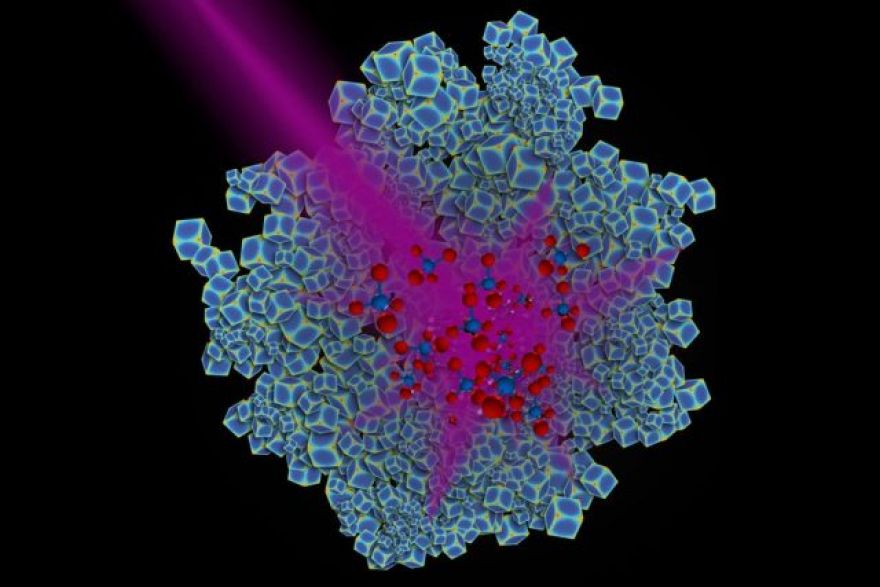
Nanocubes of this metal can generate fuel from CO2 using only sunlight
Researchers from Duke University have discovered a way to use nanocubes of rhodium as a cheap solar-powered catalyst, converting carbon dioxide into methane quickly and with high efficiency. The development stands to see use in fields as diverse as space travel and environmental chemistry.
Rhodium behaves like platinum and iridium in a lot of respects; along with platinum, in fact, it’s a common component in three-phase automotive catalytic converters. In that solid state, the catalytic activity of rhodium and platinum combines to scrub automotive exhaust of nitrogen oxides (NOx) and similar toxic, caustic, and/or smog-forming molecules.
Nanocubes, however, are a different story.
Rhodium nanocubes. Image: Everitt, Liu, Zhang et al, 2017
“We discovered that when we shine light on rhodium nanostructures, we can force the chemical reaction to go in one direction more than another,” said project spokesperson Henry Everitt in a . “So we get to choose how the reaction goes with light in a way that we can’t do with heat.”
Everitt said that effectively, plasmonic metal nanoparticles act like small antennas that absorb visible or ultraviolet light efficiently, and can do a number of things like generate strong electric fields. The fact that visible and UV light activate the nanocubes’ catalytic powers is handy because it means this process can run on sunlight. Hard to imagine something with a lower energy cost than that.
But the savings aren’t limited to energy. The nanocube catalyst could make reactions a little thriftier with reagents.
“If the reaction has only 50 percent selectivity, then the cost will be double what it would be if the selectively is nearly 100 percent,” said Xiao Zhang, coauthor. “And if the selectivity is very high, you can also save time and energy by not having to purify the product.”
Why do we need or even care about rhodium as a catalyst for that process in the first place? Methane is one of SpaceX’s chosen rocket fuels for getting to Mars. Because methane should be easier to make on Mars with materials available there, SpaceX’s shiny new Raptor runs on methane. It wouldn’t be crazy for Mr. Musk to suddenly develop an interest in rhodium nanocubes. Or acquire a company that makes them.
While it’s worth noting that yes, the CO2-to-methane reaction can be used to scrub the atmosphere of CO2, there is a major problem with using it as a carbon sequestration scheme. Methane is a much more potent greenhouse gas than carbon dioxide, and scaling up carbon scrubbing will come with attendant methane storage and stewardship requirements.
Check out the freely available original research: